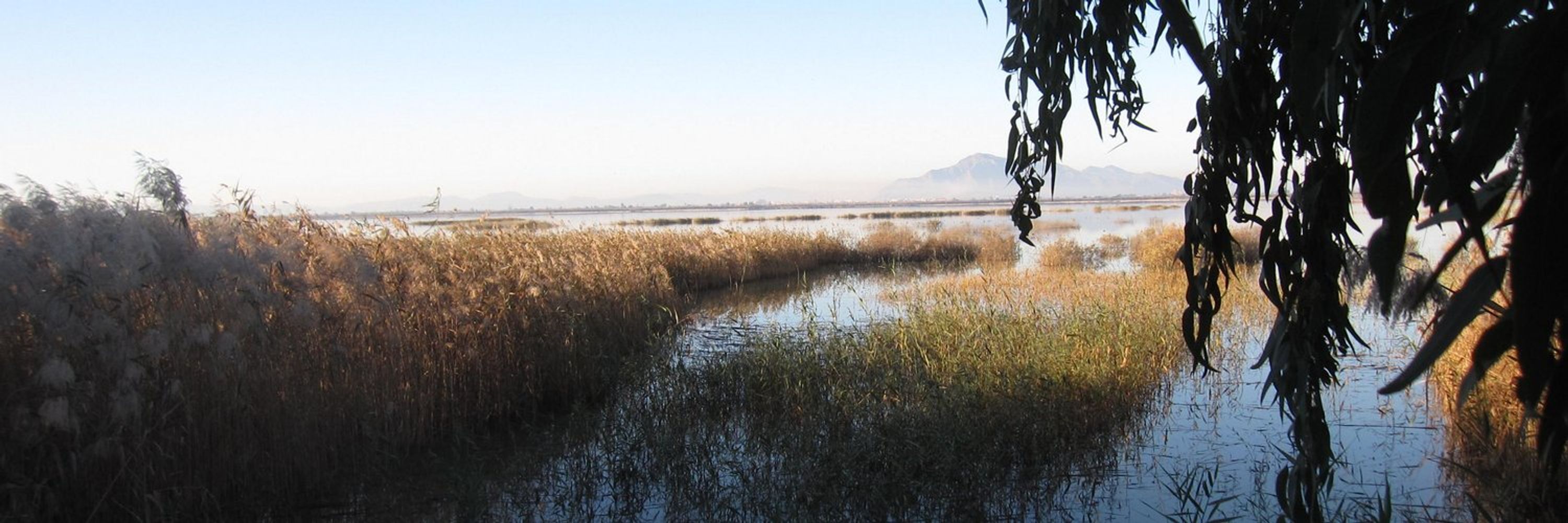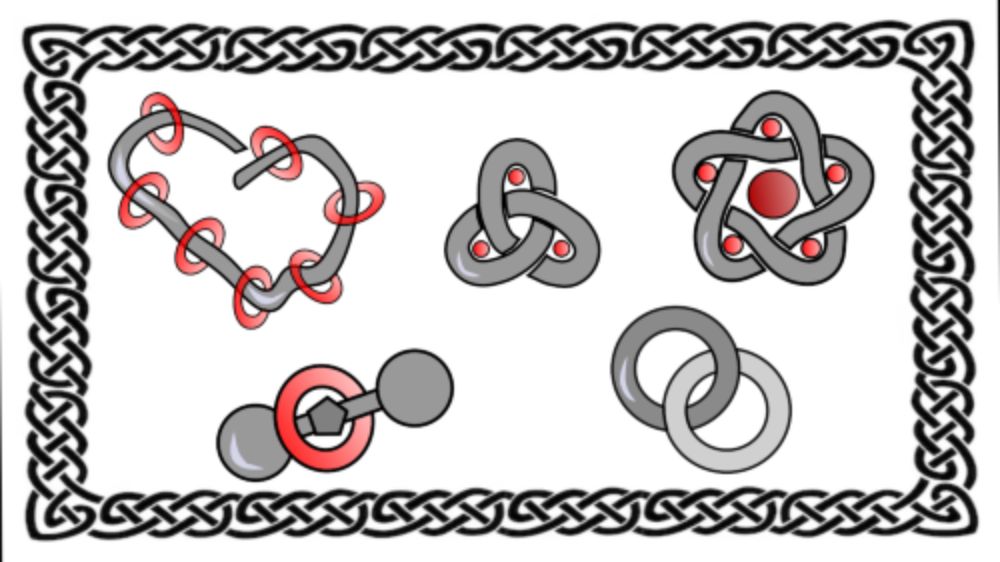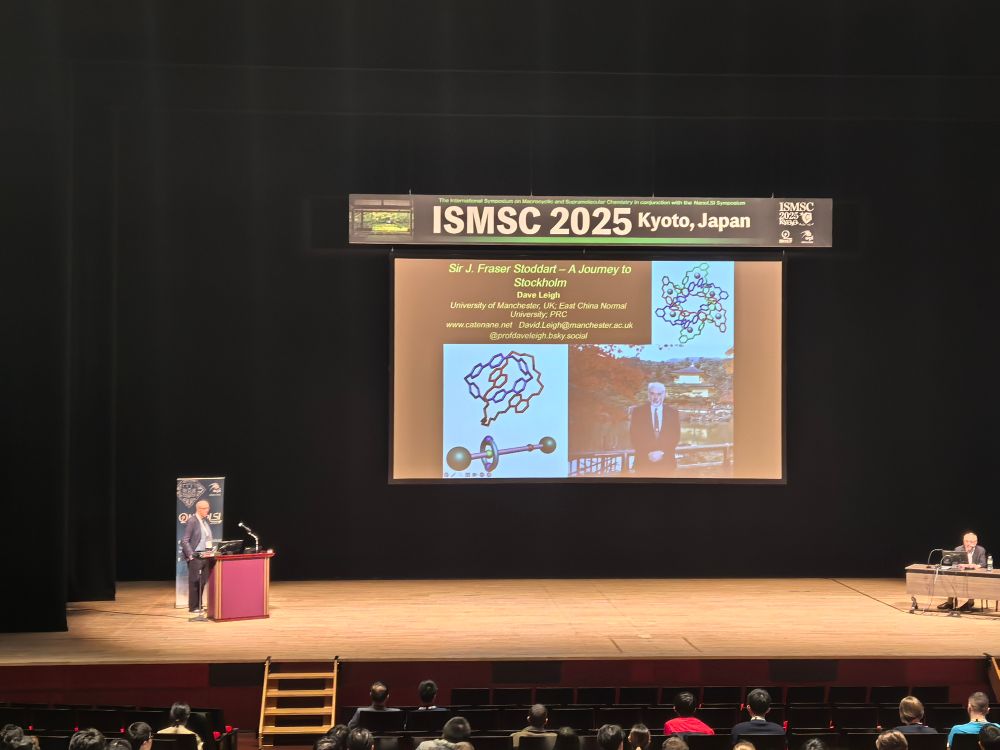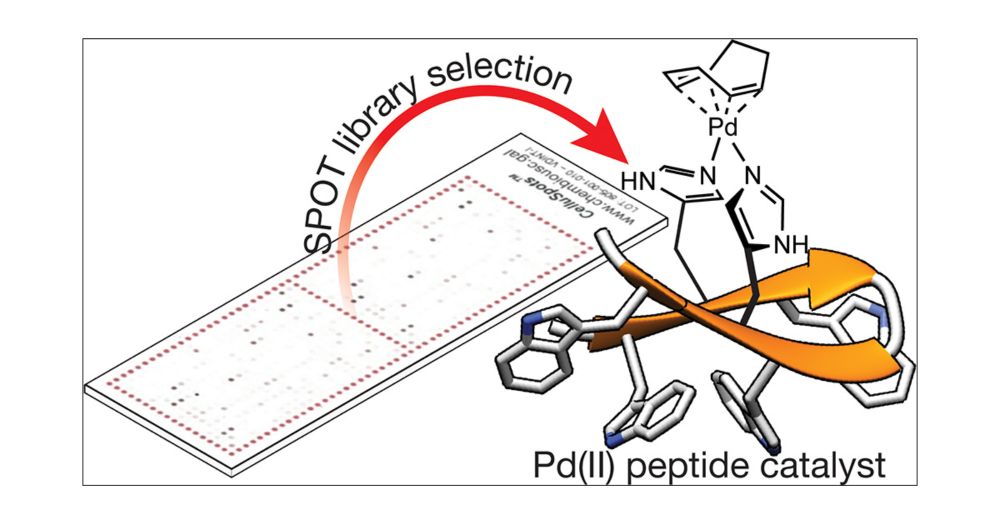
J Berna
@jbernicano.bsky.social
Professor in Universidad de Murcia @um.es; Researcher on Functional Supramolecular and Molecular Assemblies; Member of Synt. Org. Chem. Group UMU https://qosumu.wixsite.com/socumu-lab #ChemSky #Chemistry
Reposted by J Berna
In biology, molecular machines exist to perform useful functions. Artificial molecular machines now move in the same way as those in biology, but they do not yet perform tasks. Out now in Chem, a guide to task performance in molecular machinery. www.cell.com/chem/fulltex...
@cp-chem.bsky.social
@cp-chem.bsky.social

Structure-performance relationships for catalysis-driven molecular machinery
Molecular machine properties such as speed, efficiency, power, and torque depend upon
particular features of structure, mechanism, and chemistry. The graphical abstract
shows a Top Trumps-style repres...
www.cell.com
October 3, 2025 at 2:47 PM
In biology, molecular machines exist to perform useful functions. Artificial molecular machines now move in the same way as those in biology, but they do not yet perform tasks. Out now in Chem, a guide to task performance in molecular machinery. www.cell.com/chem/fulltex...
@cp-chem.bsky.social
@cp-chem.bsky.social
Reposted by J Berna
There are very little methods to control reactivity of bioorthogonal reaction of tetrazines with alkenes/alkynes. We proved rotaxanation slows kinetics, and disassembly of mechanical bond activates the reaction. @ipna.csic.es
@angewandtechemie.bsky.social
onlinelibrary.wiley.com/doi/10.1002/...
@angewandtechemie.bsky.social
onlinelibrary.wiley.com/doi/10.1002/...

Control of Tetrazine Bioorthogonal Reactivity by Rotaxanation
Control of tetrazine-mediated inverse electron demand Diels–Alder (IEDDA) reaction has been achieved by rotaxanation. Tetrazine rotaxanes were synthesized in high yield and they displayed a much slow...
onlinelibrary.wiley.com
September 22, 2025 at 8:15 AM
There are very little methods to control reactivity of bioorthogonal reaction of tetrazines with alkenes/alkynes. We proved rotaxanation slows kinetics, and disassembly of mechanical bond activates the reaction. @ipna.csic.es
@angewandtechemie.bsky.social
onlinelibrary.wiley.com/doi/10.1002/...
@angewandtechemie.bsky.social
onlinelibrary.wiley.com/doi/10.1002/...
Reposted by J Berna
Our work on the unidirectional motion of a CD is now in the September issue of Chem and on the cover!
Many thanks to the whole team and @cp-chem.bsky.social for the highlight!
@ipcm-sorbonne.bsky.social @msollogoub.bsky.social @enxuliu.bsky.social
www.cell.com/chem/fulltex...
Many thanks to the whole team and @cp-chem.bsky.social for the highlight!
@ipcm-sorbonne.bsky.social @msollogoub.bsky.social @enxuliu.bsky.social
www.cell.com/chem/fulltex...

September 12, 2025 at 2:55 PM
Our work on the unidirectional motion of a CD is now in the September issue of Chem and on the cover!
Many thanks to the whole team and @cp-chem.bsky.social for the highlight!
@ipcm-sorbonne.bsky.social @msollogoub.bsky.social @enxuliu.bsky.social
www.cell.com/chem/fulltex...
Many thanks to the whole team and @cp-chem.bsky.social for the highlight!
@ipcm-sorbonne.bsky.social @msollogoub.bsky.social @enxuliu.bsky.social
www.cell.com/chem/fulltex...
Reposted by J Berna
Congrats to Daniil & collabs from the Liu group at NTU on the #HOTpaper in @angewandtechemie.bsky.social bit.ly/4ncBOJm where we show how heterocycle basicity and H-bonding ability affect the photoswitching and thermal isomerization mechanism of hydrazone switches 🧪⚗️#chemsky #NSFfunded #molswitch

Hetero‐Hydrazone Photoswitches
Heterocycles dramatically change the performance of hydrazone photoswitches. Basic rings cause rapid thermal isomerization via tautomerization, while ones that can participate in H-bonding lower swit...
bit.ly
September 15, 2025 at 2:38 PM
Congrats to Daniil & collabs from the Liu group at NTU on the #HOTpaper in @angewandtechemie.bsky.social bit.ly/4ncBOJm where we show how heterocycle basicity and H-bonding ability affect the photoswitching and thermal isomerization mechanism of hydrazone switches 🧪⚗️#chemsky #NSFfunded #molswitch
Reposted by J Berna
Our recent papers are now published back to back in issue 37 of @angewandtechemie.bsky.social supported by a front cover designed by @drawimpacts.bsky.social
#chemsky #openaccess
Read the papers here: onlinelibrary.wiley.com/doi/10.1002/...
onlinelibrary.wiley.com/doi/10.1002/...
#chemsky #openaccess
Read the papers here: onlinelibrary.wiley.com/doi/10.1002/...
onlinelibrary.wiley.com/doi/10.1002/...


September 10, 2025 at 9:36 AM
Our recent papers are now published back to back in issue 37 of @angewandtechemie.bsky.social supported by a front cover designed by @drawimpacts.bsky.social
#chemsky #openaccess
Read the papers here: onlinelibrary.wiley.com/doi/10.1002/...
onlinelibrary.wiley.com/doi/10.1002/...
#chemsky #openaccess
Read the papers here: onlinelibrary.wiley.com/doi/10.1002/...
onlinelibrary.wiley.com/doi/10.1002/...
Reposted by J Berna
...Yet here in @jacs.acspublications.org Daniel, Qi, Jess & co show they can delete multiple template sites from rotaxanes, catenanes and a molecular knot, severing the strands multiple times, and still end up with mechanically interlocked molecules. Amazing!🤯 pubs.acs.org/doi/10.1021/...

Multiple Template Site Nitrogen Atom Deletions from Rotaxanes, Catenanes, and a Molecular Knot
We report the deletion of nitrogen atoms from multiple template sites in rotaxanes, catenanes, and a molecular knot. Nitrogen extrusion from secondary amines in the backbone of the interlocked structures is achieved using O-diphenylphosphinylhydroxylamine (DPPH), forming carbon–carbon bonds while largely maintaining the integrity of the original mechanical bonding. We find that DPPH gives improved yields (up to 51%) for nitrogen atom deletions from template sites in rotaxanes compared to an anomeric amide nitrogen-deletion reagent and overcomes a major substrate limitation in that, using DPPH, only one of the substituents of the secondary amine in the rotaxane axle needs to be radical-stabilizing. Multiple template site nitrogen atom deletions were accomplished from a range of mechanically interlocked architectures, despite the potential for dethreading, unlinking, and/or strand uncrossing during each successive deletion event. Highlights include the deletion of two template sites from a doubly threaded [3]rotaxane (37% yield) and [3]catenane (45%), quadruple N-deletion of amines from both rings of a [2]catenane (33%), and six N-deletions from the six amine groups in a molecular trefoil knot (7%). The combination of skeletal editing with template synthesis provides a general strategy for synthesis that significantly increases the structural diversity of interlocked molecules that are potentially accessible.
pubs.acs.org
August 29, 2025 at 10:55 AM
...Yet here in @jacs.acspublications.org Daniel, Qi, Jess & co show they can delete multiple template sites from rotaxanes, catenanes and a molecular knot, severing the strands multiple times, and still end up with mechanically interlocked molecules. Amazing!🤯 pubs.acs.org/doi/10.1021/...
Reposted by J Berna
🔓Don't miss this #OpenAccess review in our latest issue by Mateo Alajarin & co. from @um.es looking at the instability of 2-isocyanoanilines and the reactivity of their mono-Boc-protected derivatives #organicchemistry
Check out the full article on our website🔽
pubs.rsc.org/en/content/a...
Check out the full article on our website🔽
pubs.rsc.org/en/content/a...

2-Isocyanoanilines and their mono-Boc-protected derivatives
Among the variety of synthetically useful isocyanides, 2-isocyanoanilines have been scarcely reported in the chemical literature, despite the rich chemistry that expectedly could derive from the react...
pubs.rsc.org
August 8, 2025 at 12:52 PM
🔓Don't miss this #OpenAccess review in our latest issue by Mateo Alajarin & co. from @um.es looking at the instability of 2-isocyanoanilines and the reactivity of their mono-Boc-protected derivatives #organicchemistry
Check out the full article on our website🔽
pubs.rsc.org/en/content/a...
Check out the full article on our website🔽
pubs.rsc.org/en/content/a...
Excited to see our Collection on Mechanically Interlocked Molecules now published in @commschem.nature.com! It’s been a pleasure to edit this with @fschaufelberger.bsky.social and Serena Silvi. Grateful to all authors for their excellent contributions—lots of great science to explore! #ChemSky #MIMs
Delighted to present our Collection on Mechanically interlocked molecules! #Chemsky
Congratulations and thank you to Guest Editors
@fschaufelberger.bsky.social, Jose Berna and Serena Silvi for expertly editing this Collection of exciting content.
www.nature.com/collections/...
Congratulations and thank you to Guest Editors
@fschaufelberger.bsky.social, Jose Berna and Serena Silvi for expertly editing this Collection of exciting content.
www.nature.com/collections/...

Mechanically interlocked molecules
This Collection aims to bring together the latest research on mechanically interlocked molecules, including with respect to their design, construction, ...
www.nature.com
July 17, 2025 at 9:28 AM
Excited to see our Collection on Mechanically Interlocked Molecules now published in @commschem.nature.com! It’s been a pleasure to edit this with @fschaufelberger.bsky.social and Serena Silvi. Grateful to all authors for their excellent contributions—lots of great science to explore! #ChemSky #MIMs
Reposted by J Berna
Dual release with a bit of logic!
We show the release of a double cargo payload with 2 stimuli, force and water, with an AND gate mechanism.
Great work from Lei Chen, now available in #openaccess as a #HotPaper in @angewandtechemie.bsky.social
onlinelibrary.wiley.com/doi/10.1002/...
#chemsky
We show the release of a double cargo payload with 2 stimuli, force and water, with an AND gate mechanism.
Great work from Lei Chen, now available in #openaccess as a #HotPaper in @angewandtechemie.bsky.social
onlinelibrary.wiley.com/doi/10.1002/...
#chemsky
July 14, 2025 at 9:54 AM
Dual release with a bit of logic!
We show the release of a double cargo payload with 2 stimuli, force and water, with an AND gate mechanism.
Great work from Lei Chen, now available in #openaccess as a #HotPaper in @angewandtechemie.bsky.social
onlinelibrary.wiley.com/doi/10.1002/...
#chemsky
We show the release of a double cargo payload with 2 stimuli, force and water, with an AND gate mechanism.
Great work from Lei Chen, now available in #openaccess as a #HotPaper in @angewandtechemie.bsky.social
onlinelibrary.wiley.com/doi/10.1002/...
#chemsky
Reposted by J Berna
Durante la #RSEQBienal2025 hubo tiempo para premios... Enhorabuena a todos los galardonados por sus contribuciones a la química. Desde trayectorias consolidadas hasta investigadores jóvenes con los #LillyAwards, vuestro trabajo es inspirador
#RSEQPremios #Química #Chemistry #Bilbao2025 #BQB2025
#RSEQPremios #Química #Chemistry #Bilbao2025 #BQB2025

July 4, 2025 at 5:36 PM
Durante la #RSEQBienal2025 hubo tiempo para premios... Enhorabuena a todos los galardonados por sus contribuciones a la química. Desde trayectorias consolidadas hasta investigadores jóvenes con los #LillyAwards, vuestro trabajo es inspirador
#RSEQPremios #Química #Chemistry #Bilbao2025 #BQB2025
#RSEQPremios #Química #Chemistry #Bilbao2025 #BQB2025
Reposted by J Berna
Welcome to the official Bluesky account of the Real Sociedad Española de Química (RSEQ)!
We are the leading scientific society for chemists in Spain, promoting research, education, innovation, and outreach in chemistry.
#Chemistry #ScienceInSpain #RSEQ #Química #science #networking #research
We are the leading scientific society for chemists in Spain, promoting research, education, innovation, and outreach in chemistry.
#Chemistry #ScienceInSpain #RSEQ #Química #science #networking #research
July 4, 2025 at 4:55 PM
Welcome to the official Bluesky account of the Real Sociedad Española de Química (RSEQ)!
We are the leading scientific society for chemists in Spain, promoting research, education, innovation, and outreach in chemistry.
#Chemistry #ScienceInSpain #RSEQ #Química #science #networking #research
We are the leading scientific society for chemists in Spain, promoting research, education, innovation, and outreach in chemistry.
#Chemistry #ScienceInSpain #RSEQ #Química #science #networking #research
Reposted by J Berna
🏅 GALARDÓN | Julio Puigcerver Alarcón, estudiante de doctorado en la Universidad de Murcia, ha sido reconocido con el XXIII Premio de Investigación RSEQ-Lilly, uno de los galardones más destacados en el ámbito de la química en España.
#InvestigaciónUMU #CienciaJoven #Química
#InvestigaciónUMU #CienciaJoven #Química

June 25, 2025 at 2:03 PM
🏅 GALARDÓN | Julio Puigcerver Alarcón, estudiante de doctorado en la Universidad de Murcia, ha sido reconocido con el XXIII Premio de Investigación RSEQ-Lilly, uno de los galardones más destacados en el ámbito de la química en España.
#InvestigaciónUMU #CienciaJoven #Química
#InvestigaciónUMU #CienciaJoven #Química
Reposted by J Berna
@profdaveleigh.bsky.social giving the Fraser Stoddart memorial talk at #ismsc2025

May 25, 2025 at 8:30 AM
@profdaveleigh.bsky.social giving the Fraser Stoddart memorial talk at #ismsc2025
Reposted by J Berna
New paper in Advanced Materials !
We report acid/base-responsive CPL emitters with stable N stereogenic centers based on Tröger’s base analogs.
With @laura-lb.bsky.social, J. Fraser Stoddart, @vb-chem.bsky.social
doi.org/10.1002/adma...
@universidadgranada.bsky.social @nuchemistry.bsky.social
We report acid/base-responsive CPL emitters with stable N stereogenic centers based on Tröger’s base analogs.
With @laura-lb.bsky.social, J. Fraser Stoddart, @vb-chem.bsky.social
doi.org/10.1002/adma...
@universidadgranada.bsky.social @nuchemistry.bsky.social

May 16, 2025 at 9:18 AM
New paper in Advanced Materials !
We report acid/base-responsive CPL emitters with stable N stereogenic centers based on Tröger’s base analogs.
With @laura-lb.bsky.social, J. Fraser Stoddart, @vb-chem.bsky.social
doi.org/10.1002/adma...
@universidadgranada.bsky.social @nuchemistry.bsky.social
We report acid/base-responsive CPL emitters with stable N stereogenic centers based on Tröger’s base analogs.
With @laura-lb.bsky.social, J. Fraser Stoddart, @vb-chem.bsky.social
doi.org/10.1002/adma...
@universidadgranada.bsky.social @nuchemistry.bsky.social
Reposted by J Berna
We're excited to share our latest paper, just accepted in ACS Catalysis! 🎉 in which we describe how positionally addressable peptide libraries (SPOT libraries) can be used to discover artificial metallopeptide catalysts that work inside living cells. 👇 #ChemSky
pubs.acs.org/doi/full/10....
pubs.acs.org/doi/full/10....

Streamlined Identification of Metallopeptides for Intracellular Catalysis Using Positionally Addressable Combinatorial Libraries
The discovery and development of artificial catalysts to carry out bioorthogonal reactions in living cells is a primary goal at the interface of Chemistry and Biology. Current approaches rely on time-...
pubs.acs.org
May 8, 2025 at 8:29 AM
We're excited to share our latest paper, just accepted in ACS Catalysis! 🎉 in which we describe how positionally addressable peptide libraries (SPOT libraries) can be used to discover artificial metallopeptide catalysts that work inside living cells. 👇 #ChemSky
pubs.acs.org/doi/full/10....
pubs.acs.org/doi/full/10....
Reposted by J Berna
You can check out this paper to know how we achieved automated synthesis of aromatic oligoamide foldamers with a very wide variety of biogenic side chains! 🤖 pubs.acs.org/doi/10.1021/...

Development of Aromatic Foldamer Building Blocks Bearing Multiple Biogenic Side Chains
Aromatic oligoamides, with their intrinsic rigidity and well-defined conformations, are recognized for their potential in medical applications. Similar structures are present in several naturally occurring antibiotics and have been explored for their ability to bind to various proteins and B-DNA (canonical right-handed DNA helix). This study introduces a synthetic approach to produce quinoline amino acid monomers bearing diversified side chain combinations in positions 4, 5, and 6 of the quinoline ring, designed to enhance the side chain density on helical foldamers. By increasing the number of side chains on each monomer, we aim to mimic the dense side chain presentation of α-peptides, thus improving the potential for protein surface recognition. This synthetic strategy involves efficient functionalization through cross-coupling reactions, enabling the installation of diverse side chains at strategic positions on the quinoline ring. The process has been optimized for automated solid-phase synthesis, successfully producing a 20-unit oligoamide with good purity. This foldamer, featuring multiple cationic, anionic, polar, and hydrophobic side chains, demonstrates the potential for molecular recognition in drug discovery and therapeutic applications. The methodology described here represents a significant advancement in the construction of aromatic oligoamide foldamers, providing a robust platform for further exploration of biological systems.
pubs.acs.org
April 15, 2025 at 1:25 PM
You can check out this paper to know how we achieved automated synthesis of aromatic oligoamide foldamers with a very wide variety of biogenic side chains! 🤖 pubs.acs.org/doi/10.1021/...
Reposted by J Berna
Re-inventing the wheel. Instead of a #ChemEd #Chemistry #ChemSky summary here is my version of a pKa (in H2O) scale. Values are taken from the wonderful Evans/Ripin & Hans Reich resources. If you want a table, I recommend these.
This was an attempt at a more visual representation of the data
Enjoy
This was an attempt at a more visual representation of the data
Enjoy


April 8, 2025 at 8:51 AM
Re-inventing the wheel. Instead of a #ChemEd #Chemistry #ChemSky summary here is my version of a pKa (in H2O) scale. Values are taken from the wonderful Evans/Ripin & Hans Reich resources. If you want a table, I recommend these.
This was an attempt at a more visual representation of the data
Enjoy
This was an attempt at a more visual representation of the data
Enjoy
Reposted by J Berna
🚨: New paper out! Just a few hours ago in
@jacs.acspublications.org, our very own postdoc Harry introduces maleimide polyacetylene (mPA), a new n-type conjugated polymer with good conductivity & ambient stability, accessed via mild, base-mediated oxidation. Huge congrats! doi.org/10.1021/jacs...
@jacs.acspublications.org, our very own postdoc Harry introduces maleimide polyacetylene (mPA), a new n-type conjugated polymer with good conductivity & ambient stability, accessed via mild, base-mediated oxidation. Huge congrats! doi.org/10.1021/jacs...

Maleimide Polyacetylene: A Highly Conductive n-Type Polymer
Despite significant interest in conjugated polymers for a wide range of applications in electronics, n-type materials have lagged in performance relative to their p-type counterparts. Polyacetylene is a promising scaffold for addressing this deficiency, as the most conductive conjugated polymer to date when p-doped. However, it displays orders of magnitude lower conductivity in the n-doped state and is not stable under ambient conditions. The systematic introduction of electron-withdrawing groups to the backbone could solve this issue, but few such examples exist. Herein, we address this gap by introducing maleimide polyacetylene (mPA) as a new n-type conjugated polymer. The alternating vinylene-maleimide sequence introduces strongly electron-withdrawing groups to the polyacetylene core while retaining backbone planarity, conferring both ambient stability (LUMO = −4.35 eV) and good conductivity (σ = 22 S/cm) in the n-doped state. The versatile synthetic approach uses ring opening metathesis polymerization to generate nonconjugated precursor polymers with low dispersity and controlled molecular weight. These are then converted to mPA by an unusual base-mediated oxidation that leverages the acidity of the maleimide α-protons.
doi.org
April 8, 2025 at 10:26 PM
🚨: New paper out! Just a few hours ago in
@jacs.acspublications.org, our very own postdoc Harry introduces maleimide polyacetylene (mPA), a new n-type conjugated polymer with good conductivity & ambient stability, accessed via mild, base-mediated oxidation. Huge congrats! doi.org/10.1021/jacs...
@jacs.acspublications.org, our very own postdoc Harry introduces maleimide polyacetylene (mPA), a new n-type conjugated polymer with good conductivity & ambient stability, accessed via mild, base-mediated oxidation. Huge congrats! doi.org/10.1021/jacs...
Reposted by J Berna
Nature Communications is looking to hire an organic chemist – more details in the link below #Chemsky #Chemjobs 🧪

Associate or Senior Editor (Organic Chemistry), Nature Communications
Job Title: Associate or Senior Editor (Organic Chemistry), Nature Communications Organisation: Nature Portfolio Locations: Jersey City, London, New York, Philadelphia or Washington DC - hybrid working...
springernature.wd3.myworkdayjobs.com
April 10, 2025 at 1:07 PM
Watch out world, Dr. Guillermo Cutillas from @um.es is here! 🎓Congrats on a job well done, from his proud supervisors Aurelia Pastor and @jbernicano.bsky.social from t.co/ZXzIgoZTOu. Good luck!! Thanks to @beaescuder.bsky.social, Pilar Sanchez and @nunobasilio.bsky.social for being on the committee.

April 7, 2025 at 10:31 AM
Watch out world, Dr. Guillermo Cutillas from @um.es is here! 🎓Congrats on a job well done, from his proud supervisors Aurelia Pastor and @jbernicano.bsky.social from t.co/ZXzIgoZTOu. Good luck!! Thanks to @beaescuder.bsky.social, Pilar Sanchez and @nunobasilio.bsky.social for being on the committee.
Reposted by J Berna
Here is a tentative Supramolecular Chemistry starter kit. Please let me know if you wish to be added ! #ChemSky
go.bsky.app/RjRgi6n
go.bsky.app/RjRgi6n
January 6, 2025 at 5:16 PM
Here is a tentative Supramolecular Chemistry starter kit. Please let me know if you wish to be added ! #ChemSky
go.bsky.app/RjRgi6n
go.bsky.app/RjRgi6n
Reposted by J Berna
Supramolecular chemistry has officially "grown up" in Germany. On behalf of the 10-person Founding Team👇, I am happy to announce the creation of section SupraChem within the German Chemical Society! 🍾 GDCh members please consider joining asap via www.gdch.de/suprachem @gdch.bsky.social

Supramolekulare Chemie | Gesellschaft Deutscher Chemiker e.V.
www.gdch.de
March 20, 2025 at 10:39 AM
Supramolecular chemistry has officially "grown up" in Germany. On behalf of the 10-person Founding Team👇, I am happy to announce the creation of section SupraChem within the German Chemical Society! 🍾 GDCh members please consider joining asap via www.gdch.de/suprachem @gdch.bsky.social
Reposted by J Berna
Curious about circularly polarized luminescence in rotaxanes & catenanes? Our latest review explores CPL in MIMs!
Proud to publish with Juan M. Cuerva and Victor Blanco in #ChemistryEurope (@chemistryeurope.bsky.social pe.bsky.social) !
doi.org/10.1002/ceur...
Proud to publish with Juan M. Cuerva and Victor Blanco in #ChemistryEurope (@chemistryeurope.bsky.social pe.bsky.social) !
doi.org/10.1002/ceur...

March 14, 2025 at 10:54 AM
Curious about circularly polarized luminescence in rotaxanes & catenanes? Our latest review explores CPL in MIMs!
Proud to publish with Juan M. Cuerva and Victor Blanco in #ChemistryEurope (@chemistryeurope.bsky.social pe.bsky.social) !
doi.org/10.1002/ceur...
Proud to publish with Juan M. Cuerva and Victor Blanco in #ChemistryEurope (@chemistryeurope.bsky.social pe.bsky.social) !
doi.org/10.1002/ceur...
Reposted by J Berna
Since I blogged yesterday about metal-organic framework (MOF) crystals, let me share some old photos of ones that I made while I was also trying the small-molecule-guest crystallography idea.
These things formed in sealed vials of hot DMF - they are *very* crystalline indeed.
These things formed in sealed vials of hot DMF - they are *very* crystalline indeed.
March 14, 2025 at 2:27 PM
Since I blogged yesterday about metal-organic framework (MOF) crystals, let me share some old photos of ones that I made while I was also trying the small-molecule-guest crystallography idea.
These things formed in sealed vials of hot DMF - they are *very* crystalline indeed.
These things formed in sealed vials of hot DMF - they are *very* crystalline indeed.
Reposted by J Berna
A mechanochromic rotaxane that releases azetidine-trityl-maleimide, a new fluorescent probe with rigidochromic properties and excellent stability!
Great work from @mengjiaowu.bsky.social now as a #hotpaper in @angewandtechemie.bsky.social
#chemsky #OA
onlinelibrary.wiley.com/doi/10.1002/...
Great work from @mengjiaowu.bsky.social now as a #hotpaper in @angewandtechemie.bsky.social
#chemsky #OA
onlinelibrary.wiley.com/doi/10.1002/...

A Mechanochromic Rotaxane that Releases Azetidine‐Trityl‐Maleimide, a Versatile Fluorescent Probe
A mechanochromic rotaxane capable of releasing azetidine-trityl-maleimide (ATM), a new fluorescent probe displaying excellent optical properties (rigidochromic, large Stokes shift, solvent insensitiv...
onlinelibrary.wiley.com
March 5, 2025 at 3:20 PM
A mechanochromic rotaxane that releases azetidine-trityl-maleimide, a new fluorescent probe with rigidochromic properties and excellent stability!
Great work from @mengjiaowu.bsky.social now as a #hotpaper in @angewandtechemie.bsky.social
#chemsky #OA
onlinelibrary.wiley.com/doi/10.1002/...
Great work from @mengjiaowu.bsky.social now as a #hotpaper in @angewandtechemie.bsky.social
#chemsky #OA
onlinelibrary.wiley.com/doi/10.1002/...

